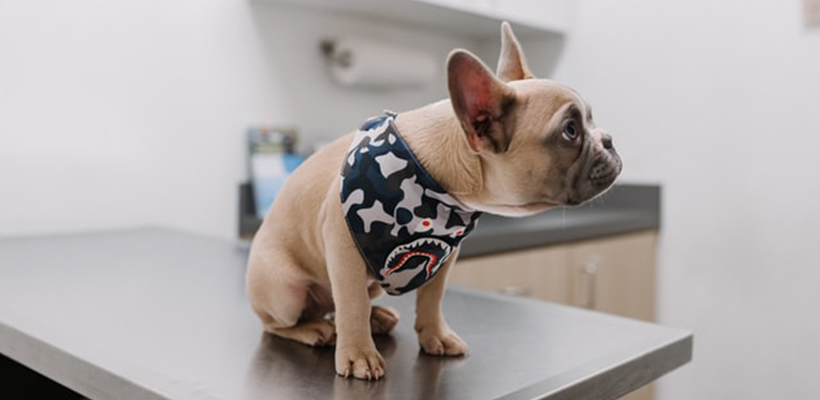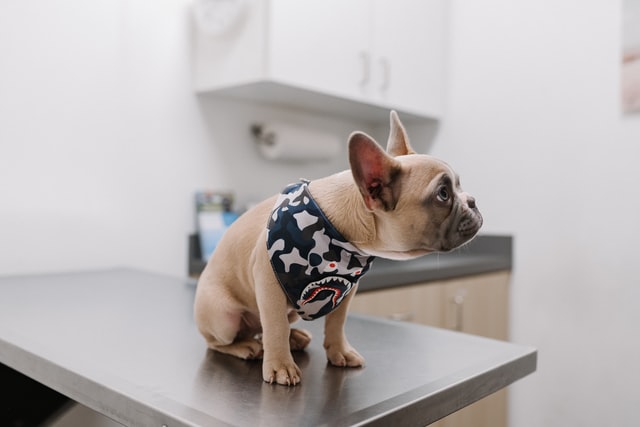
How to Help an Anxious Dog Visit the Vet
This article is contributed by guest writer Dakota Murphey (Freelance Writer)
As many dog owners can attest to, a trip to the vet with your four-legged friend is often a difficult affair. Most really don’t like going, and who can blame them? If they aren’t being poked and prodded by a vet, they are bombarded by strange sounds and smells.
The fear is palpable and your dog may associate it with trauma, even though they are only there for their own benefit. Fortunately, if your dog struggles to keep their cool when visiting the vet there are some solutions to make it a more enjoyable visit for them and for you.
Why do dogs hate the vet?
The reason why dogs hate the vet is relatively straightforward. Although they are there for their benefit they simply can’t rationalize why a visit to the pet doctor is a good thing. Particularly when they are restrained by a veterinarian who will poke them, possibly prick them with a needle and even take blood. It’s not too different from humans visiting the doctor, and the general experience can just as unpleasant for your dog.
Additionally, dogs are so closely bonded to their humans that they can sense when we are stressed, this includes getting stressed about taking your pooch to the vet. As they sense the stress levels rising in you, their own levels will be elevated and it becomes a vicious cycle.
With the pandemic boosting first-time pet ownership, pet parents must understand what stress looks like in their dogs. Here are the typical signs that your dog doesn’t like the vet:
- Cowering,
- Drooling,
- Ears pinned back,
- Lip licking,
- Excess panting;
- Shaking;
- Tucking their tail between their legs.
Now that we know why dogs are scared of the vet and the signs to look out for, let’s explore some ways you can help anxious dogs visit the vet with more confidence.
Desensitization
Desensitization is a method of exposing your pet to a stimulus that would normally cause them to have an undesirable reaction. The key is to expose them to an extremely low level which helps your pet become less reactive.
It is a gradual process and one that must be done slowly. As your pet slowly becomes more familiar with low-level exposure to the vet you can increase their interaction level. Their tolerance of their anxiety trigger will build up, ideally to the point where they don’t react at all to visiting the vet.
Start slowly
It is important to start at a level of challenge that your dog can handle and progress from there. For some dogs, that might begin with a car journey that they also associate with going to the vet.
Other actions that vets perform that can help in the desensitization process include getting your dog used to being handled. This includes clipping their nails, brushing their teeth, or touching them near their stomach or tail.
Desensitize by visiting the vet for fun

Another big step in desensitizing your dog and reducing their anxiety regarding the vet is to make regular social trips to the very place they hate. But, importantly, make your visits fun and ensure they have nothing to do with being examined by the veterinarian. Many vets are more than happy to welcome visitors during quieter times, just make sure to call ahead of time.
You can repeat these visits every couple of weeks and eventually your dog will come to associate the vet with positive feelings. Let them have a good sniff around each time they visit and they may begin to enjoy their trips to the vet and even the car journey there.
Arrange for a home visit
You may find that it’s slow progress getting your dog to be comfortable visiting the vet. That’s okay, you can continue trying to use the desensitization method and they may eventually learn to like it, or failing that, accept it but feel neither bad nor good about the vet. Finding a vet that offers home visits is a good way to help your dog feel as calm as possible when getting checked over.
Most anxious dogs feel the most comfortable in their own homes so this may be the best approach to ensuring their stress levels are kept to a minimum. Of course, there is a danger that your dog could start to associate your home with negative feelings so continue your desensitization training.
Practice doing veterinary exams at home
To help make your dog feel more comfortable with the procedures they experience at the vet, consider doing mock veterinary exams at home. This works especially well for vets who make a call to your home but it can also help those dogs who bravely go into a veterinarian surgery for a check-up.
From inviting people your dog doesn’t know to come and handle them, through to giving their ears, teeth, and paws extra attention, it all helps them become used to the vet experience. Giving your pet lots of treats and praise as the training continues just adds to the positive feelings your dog will begin to have. With many of these training sessions under their belt, your dog will associate regular veterinary exams with this practice.
Exercise before your vet visit
Many dog parents can solve behavioral issues with their four-legged friends through routine and exercise. Physical activity is commonly recommended as a remedy for behavior-related problems because it helps make our dogs happier and healthier. For this reason, wearing them out before a visit to the vet can improve your dog’s levels of relaxation when they are in the waiting room or surgery area.
Try to play with your dog before their appointment, either by throwing a ball around a nice green space for up to an hour or taking them on a long walk. You know your dog best, so whatever activity is likely to wear them out best should be done just before their vet appointment. This method works well for healthy dogs just going in for a check-up but if your dog has a condition or injury that means they can’t do physical exertion then exercise is not the answer.
